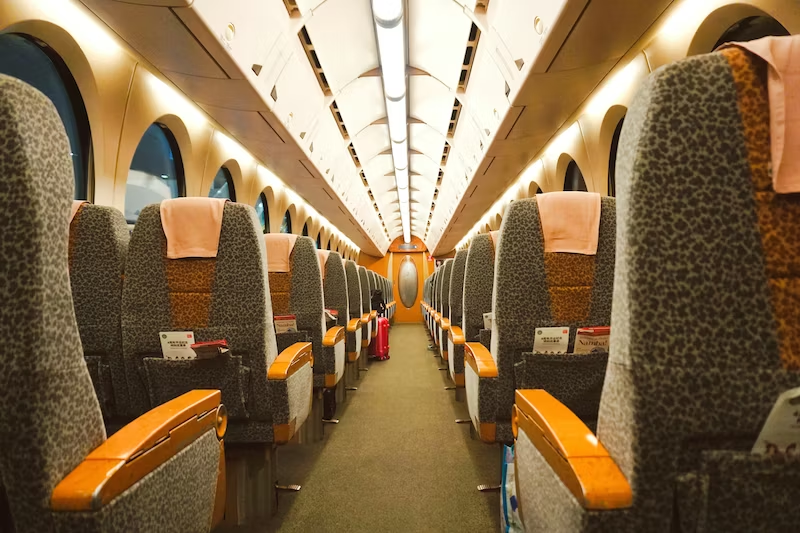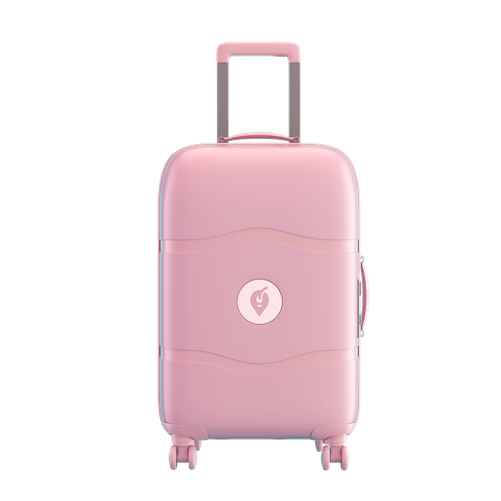Shinkansen Tips: How to Travel From Osaka to Tokyo by Train

Ready for your Osaka to Tokyo journey via the Shinkansen? This high-speed train epitomizes Japan's technological prowess and offers a swift, comfy trip. Here are some Shinkansen travel tips: remember, JR East operates part of the route, so familiarize yourself with their services. Booking seats in advance is a smart move, especially during peak times.
Also, while Shinkansen tickets are a separate purchase from local train tickets, planning your entire route, including local connections, is crucial for a smooth journey. Get set for an exciting and efficient travel experience!
Before hopping on the train, consider using Nannybag luggage storage Osaka train station. It's super convenient for storing your bags, giving you the freedom to explore the city luggage-free before your trip. Find convenient drop-off locations in both Tokyo and Osaka!
Booking Your Shinkansen Tickets
Ticket Offices and JR Pass: Shinkansen tickets can be bought at ticket offices or the Midori no Madoguchi at JR stations. For extensive travel, a JR Pass is beneficial, offering unlimited rides on most JR trains, except for the fastest Shinkansen services like Nozomi.
Shinkansen Lines from Osaka to Tokyo: The Tokaido Shinkansen line is the primary connection between Osaka and Tokyo. Trains leave from Shin-Osaka Station, not the central Osaka Station, so travelers should plan their transit to the station accordingly.
Choosing Your Train Type
High-Speed Options: The Shinkansen offers three types of trains: Nozomi (fastest), Hikari (moderate speed), and Kodama (slowest). Travelers with a JR Pass should note that it does not cover Nozomi and Mizuho trains.
Train Stations: It's important to know that not all Shinkansen trains stop at every station. Checking the train schedule in advance is crucial to see which stops are made by your chosen train type.
Reserved Seats vs. Non-Reserved Seats
Reserved Seats: Opting for a reserved seat guarantees a specific spot, which is particularly recommended during busy periods like holidays or festivals to avoid the inconvenience of not finding a seat.
Non-Reserved Seats: For more flexibility, non-reserved seats are a good option. They are generally more affordable but come with the risk of not finding a seat, especially during peak travel times.

The Green Car - A Luxurious Option
Green Car: For a more comfortable journey, choose the Green Car on the Shinkansen, Japan's equivalent of business class. These seats offer more space and enhanced amenities for a luxurious travel experience.
At the Station - Navigating to the Shinkansen Platforms
Shinkansen Platforms: At the station, Shinkansen platforms are typically separate from local train platforms. Clear English signage is available to guide you to the correct platform.
Boarding the Train: Refer to the electronic boards at the platform for your train's departure time and platform number to ensure a smooth boarding process.
Onboard the Shinkansen
Enjoy the Ride: The Shinkansen is celebrated for its smooth, punctual rides. It's an experience to savor as you traverse the Japanese landscape at high speed.
Amenities Onboard: Shinkansen trains are equipped with facilities for comfort, including restrooms, vending machines, and sometimes food carts, enhancing your travel experience.
Exploring Tokyo
Arrival at Tokyo Station
Arriving at Tokyo Station, you enter the heart of Japan's capital. This central hub connects to various parts of the city and the country, making it a key point for further exploration.
Ticket Costs and Travel Time
Cost of Travel
Shinkansen ticket prices from Osaka to Tokyo vary based on train type and class. For the most current pricing, it's advisable to check online or inquire at the station.
Travel Time
Travel time between Osaka and Tokyo generally ranges from 2.5 to 3 hours, influenced by the choice of Shinkansen. The journey is not only a travel necessity but also an opportunity to experience Japan's famed rail efficiency and comfort.

General Tips
- Understand the Lines: Familiarize yourself with the train lines, especially the difference between JR, subway, and private lines.
- Prepaid Cards: Consider using a prepaid card like ICOCA for convenience across different lines.
- Peak Hours: Avoid traveling during peak hours if possible, as trains can be crowded.
- Station Exits: Know your exit in advance as major stations have multiple exits.
- Platform Etiquette: Queue orderly and wait for passengers to alight before boarding.
- Maps and Apps: Use station maps and train apps for navigation.
- Luggage: Keep your luggage compact as trains can get crowded.
- Language Support: English signage and announcements are available in major stations and trains.
Is Train Travel Safe?
Train travel in Osaka is generally considered very safe. The trains and stations are well-maintained, and there are frequent security and staff patrols. Incidents of crime are rare due to the efficient security measures and the culture of respect and safety that prevails in Japan.
Furthermore, emergency procedures and information are clearly displayed in train carriages and stations. However, as with travel in any city, it’s always wise to be aware of your surroundings and keep an eye on your belongings.

Say hello to exploring and goodbye to heavy bags!
What if you could enjoy every minute in the city without the burden of your bags?
- Safe luggage storage for a flat daily price of ¥750/luggage item
- Included luggage protection of up to €10000 in case of breakage, loss or theft
